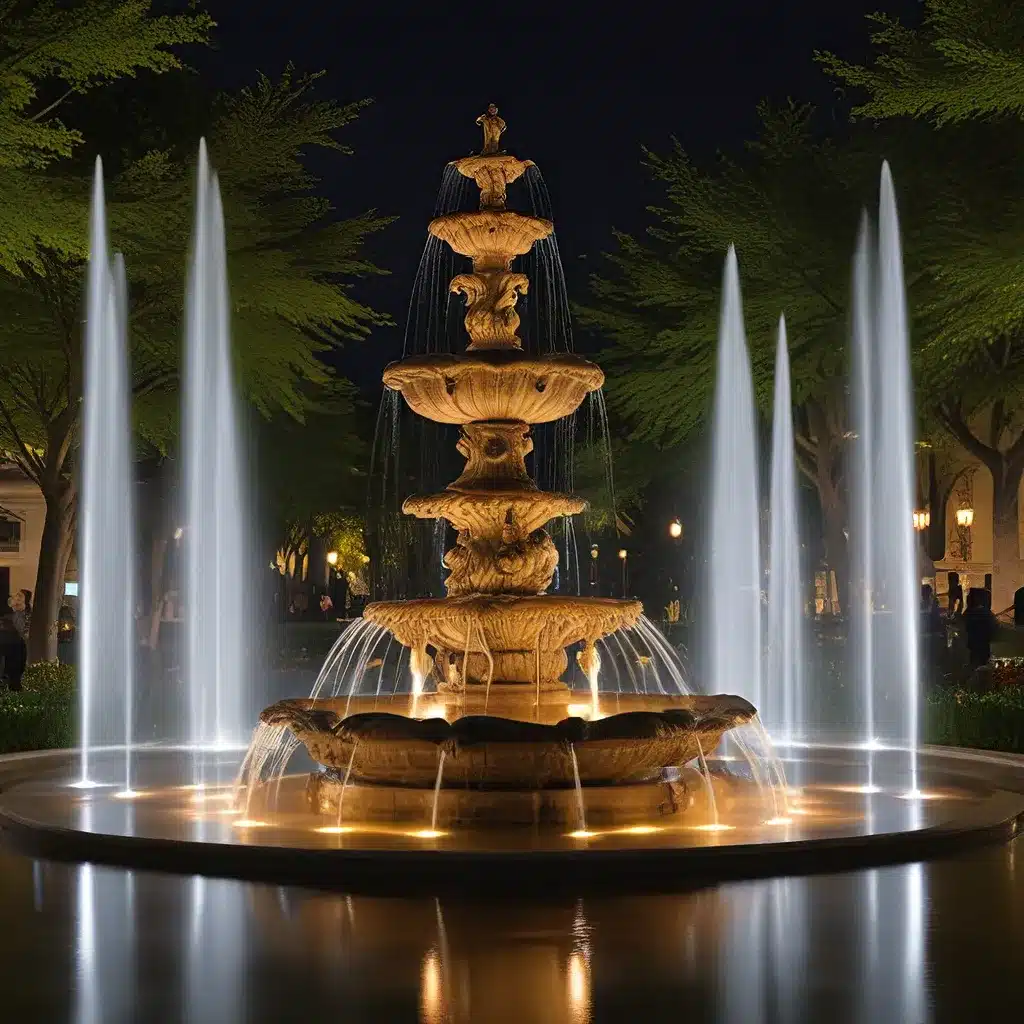
Fountain Design Essentials – Welcome to Fountain Lights
Fountain Design Essentials – Welcome to Fountain Lights

As a fountain enthusiast, I’ve encountered my fair share of pump and nozzle problems. From insufficient water flow to nozzle blockage, these issues can put a damper on the tranquil beauty of your fountain. But fear not! In this article, I’ll guide you through solving these common problems, ensuring your fountain flows smoothly once again. So, let’s dive in and troubleshoot those pesky pump and nozzle issues together!
I often encounter the issue of insufficient water flow when troubleshooting fountain pump and nozzle problems. Maintaining proper water flow is crucial for the optimal functioning of fountains. To tackle this issue, it is important to follow certain troubleshooting techniques. First, check the pump’s impeller for any debris or clogs that may be obstructing water flow. Clean or replace the impeller as needed. Next, inspect the nozzle for any blockages or restrictions. Clear any debris or obstructions to ensure smooth water flow. Additionally, check the pump’s intake screen for any buildup that could impede water flow. Regular cleaning and maintenance of the intake screen can prevent flow issues. By implementing these troubleshooting techniques, water flow maintenance can be effectively addressed, ensuring the smooth operation of fountains.
To troubleshoot the issue of the pump not starting, it is important to check the power supply and connections. Here are some troubleshooting tips and a maintenance checklist to help you identify and resolve the problem quickly:
| Troubleshooting Tips | Maintenance Checklist |
|---|---|
| 1. Check if the power supply is connected and turned on. | 1. Regularly clean the pump and remove any debris. |
| 2. Inspect the power cord for any damage or loose ends. | 2. Verify that the power cord is not frayed or damaged. |
| 3. Ensure that the circuit breaker or fuse is not tripped. | 3. Lubricate the pump’s moving parts as per the manual. |
| 4. Examine the pump’s connections for any loose wires. | 4. Inspect the connections for any signs of corrosion. |
| 5. Test the pump with a different power source. | 5. Schedule regular maintenance to prevent future issues. |
Following these troubleshooting tips and regularly checking the maintenance checklist will help you resolve the pump not starting issue efficiently.
Continuing from troubleshooting the pump not starting, a common issue that can affect the performance of a fountain is nozzle blockage. When the nozzle becomes blocked, it can disrupt the spray pattern and reduce the overall aesthetic appeal of the fountain. To resolve this issue, it is important to use effective cleaning techniques. One method is to use a small brush or toothpick to remove any debris or mineral buildup that may be clogging the nozzle. Additionally, soaking the nozzle in a mixture of water and vinegar can help dissolve any stubborn deposits. It is crucial to clean the nozzle regularly to prevent blockages and ensure a consistent and pleasing spray pattern.
One possible cause of inconsistent water pressure in a fountain is a malfunctioning pump. Troubleshooting water pressure issues can help identify and resolve the problem. Here are four steps to address water pressure fluctuations:
I discovered the main cause of the pump overheating during my extensive pump maintenance and troubleshooting. The most common reason for pump overheating is a lack of proper maintenance, which leads to the accumulation of debris and blockage in the pump system. This impedes the flow of water and causes the pump to work harder, resulting in increased temperature. To avoid pump overheating, regular cleaning and maintenance are crucial. Here is a table summarizing the key maintenance steps to prevent overheating:
| Maintenance Step | Frequency | Importance |
|---|---|---|
| Clean debris from pump intake | Monthly | High |
| Lubricate pump motor bearings | Annually | Medium |
| Check for leaks in the pump system | Quarterly | High |
After identifying the main cause of pump overheating, I now turn my attention to the issue of nozzle leaking. Nozzle leaking can be a frustrating problem that affects the performance of a fountain. Here are some common causes of nozzle leaking and ways to prevent it:
Now, let’s address the issue of water spurting from the nozzle, a problem that can disrupt the smooth operation of your fountain. Water spurting from the nozzle is often caused by water pressure issues or nozzle maintenance problems. To troubleshoot water pressure, check if the water source is providing enough pressure for the fountain pump. Low water pressure can lead to water spurting instead of a steady flow. Adjusting the water pressure can help alleviate this issue. In terms of nozzle maintenance, make sure the nozzle is clean and free from any debris or blockages. Regularly inspect and clean the nozzle to ensure proper water flow. Additionally, check if the nozzle is properly screwed onto the fountain head to prevent any water leakage. By troubleshooting water pressure and practicing proper nozzle maintenance techniques, you can resolve the problem of water spurting from the nozzle and restore the smooth operation of your fountain.
To troubleshoot the issue of a pump making unusual noises, start by inspecting the pump for any loose or worn-out parts. Here are some possible causes and solutions for a pump motor malfunction and water suction issue:
Share to :
Subscribe to our newsletter for the latest in fountain design, innovative lighting ideas, and exclusive tips straight to your inbox. Join the community shaping the future of water features.

Rapid delivery to your doorstep.

Excellence in every product.

Great value for your investment.

Assistance at any hour.
Fountain Lights — Illuminating creativity in every splash!
Copyright © 2023. All Right Reserved